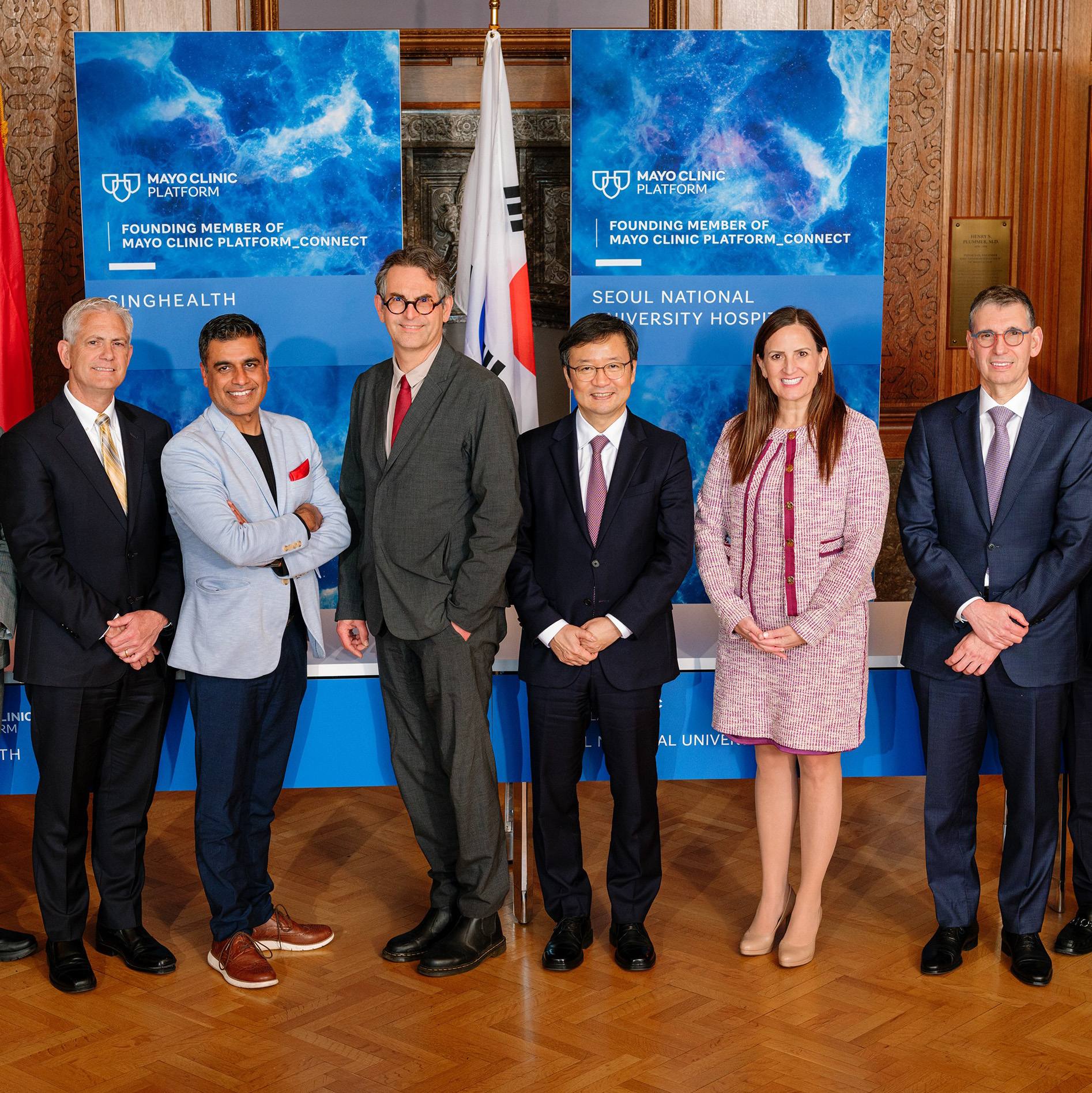-
Research
Science Saturday: A twist of fate led to regenerative medicine
A chance meeting on a student shuttle bus put Wenchun Qu, M.D., Ph.D., on a new direction that years later would culminate in becoming the Jorge and Leslie Bacardi Associate Director of the Mayo Clinic Center for Regenerative Biotherapeutics in Florida.
During a ride to the University of Southern California (USC) where Dr. Qu was completing doctoral studies in the 1990s, he struck up a conversation with a young man he routinely saw on the bus.
"I asked what he was studying. He said, 'occupational therapy,' and explained it was about maximizing functional recovery from catastrophic disease or aging," says Dr. Qu. "That was the first time I had ever heard of rehabilitation. Viewing a patient not from functional loss but functional potential made so much sense to me. It was new to me; China didn’t have rehabilitation services at that time."
Fascinated by the concept of regenerating the body, Dr. Qu changed his doctoral studies from molecular biology to occupational science.
Interest in musculoskeletal conditions
In the nearly two decades since that encounter on the bus, Dr. Qu has channeled his passion for rehabilitation into research and practice to help patients with musculoskeletal conditions such as spinal cord injuries, arthritis and back pain. He leads a regenerative medicine lab at Mayo Clinic dedicated to understanding whether cell and gene therapies have therapeutic potential to slow or stop spinal deterioration and regenerate the body.
"My interest is to develop the next generation cell and gene therapy strategies, particularly with genetically modified stem cells and cell products that address the inflammatory processes associated with degenerated intervertebral disc and joints found in limbs," says Dr. Qu. "My goal is to maintain the healthy structure, reduce pain and preserve function."

"My interest is to develop next generation cell and gene therapy strategies,"
-Wenchun Qu, M.D., Ph.D.
Dr. Qu is also a pain medicine physician who delivers orthobiologics, such as platelet-rich plasma and bone marrow aspirate concentrate, to patients with pain from degenerative disc disease or osteoarthritis. Platelet-rich plasma is platelets spun from a patient's own blood that have shown healing potential. Bone marrow aspirate concentrate is fluid taken from a patient's bone marrow that contains concentrated growth factors, stem cells and other specialized cells that may reduce pain and improve function.
Priorities in Florida
As the new associate director of the Mayo Clinic Center for Regenerative Biotherapeutics in Florida, Dr. Qu hopes to make cell therapies more accessible to patients by accelerating transition with scalable biomanufacturing. Together with Center for Regenerative Biotherapeutic leaders across all Mayo Clinic, Dr. Qu has set as priorities:
- Chimeric antigen receptor therapy (CAR-T cell therapy) — genetically modified cells that harness the body's immune system to fight cancer.
- Tissue engineering — using regenerative biotherapeutics technology to develop tissues or organs and improve success of transplant.
- Cell and gene therapies that address degenerative and injured tissues in need of repair.
"My hope is to advance findings of our scientific community for the benefit of patients everywhere," says Dr. Qu.
From rural China to Mayo Clinic
While Dr. Qu's pivot to regenerative medicine years ago was an unexpected turn in his career, his desire to become a physician was not. As a young boy growing up in northeastern China, Dr. Qu was interested in medicine from the influence of his mother, a midwife who often took him along when delivering babies in households — the only option in a rural area with no access to hospitals or physicians.
Dr. Qu's road to medical practice in the U.S. was full of surprises that he could not have possibly imagined. After graduating from medical school and completing his residency in China, Dr. Qu practiced as a spine surgeon in Beijing.
His desire to pursue doctoral studies drew him to USC. After finishing his Ph.D. at USC and postdoctoral work at University of Pennsylvania, Dr. Qu came to Mayo Clinic for his residency in the Physical Medicine & Rehabilitation Program in the Mayo Clinic Graduate School of Medical Education.
"I couldn’t believe I was accepted as a resident at Mayo, because it had been 17 years since I graduated from medical school in Shanghai," says Dr. Qu. "The website stated that foreign medical graduates were eligible within three years after graduation. I thought to myself, 'I'll apply regardless.'"
After his residency, Dr. Qu completed a fellowship in pain medicine at Mayo Clinic. He now holds academic rank of professor of anesthesiology and associate professor of physical medicine and rehabilitation. Dr. Qu is vice chair of research and innovation for the Department of Pain Medicine at Mayo Clinic in Florida, in addition to his new role with the Center for Regenerative Biotherapeutics.
"I'm so grateful for all the things this country (the U.S.) has given me. With hard work, there is equal opportunity, and that should never be taken for granted," says Dr. Qu.
###
Additional articles featuring Dr. Qu's research and practice:
Could regenerative medicine relieve neck, spine pain?
Platelet-rich plasma: A regenerative approach to healing chronic woundsMayo Clinic research is a step toward hope for spinal cord injuries








